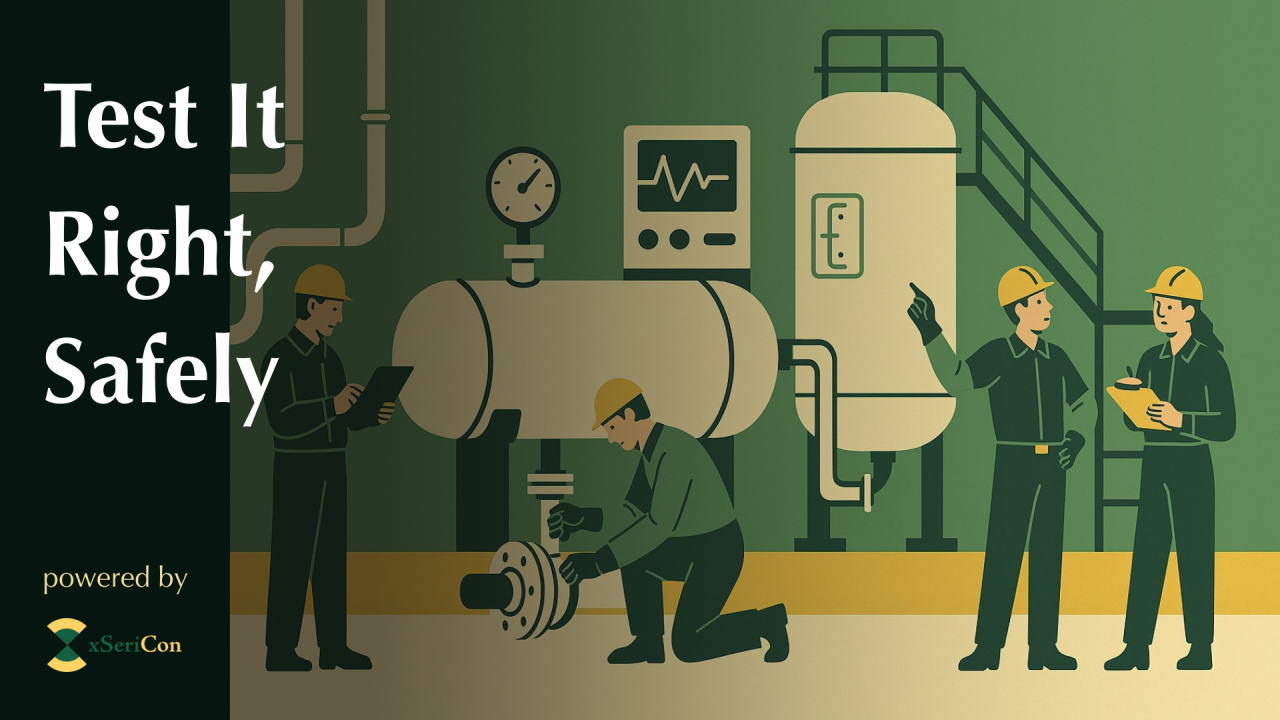Testing is a critical part of every process plant’s lifecycle—whether it’s pressure test for newly repaired piping or vessels, loop tests for safety interlocks, or tests of critical protective devices such as alarms and relief valves. Testing is an essential part of every process plant’s lifecycle, ensuring that safety-critical equipment will function as intended when needed.
Over the years, best practices and equipment have evolved to support safe testing. For example, pressure tests are done with liquids (hydrotesting) instead of gases, because the energy release is much less dangerous if the equipment fails under test.
But testing itself introduces additional risks.
Testing Is Not “Business as Usual” ⚠️
The industry is also well aware that any task that disturbs the normal state of the equipment and process—like testing—carries more hazard than the stable routine operation. This is when most accidents happen.
Why? Because most accidents happen during the ‘Delta’ states
The industry is also well aware that during the testing:
• Normally dormant equipment is brought online (e.g. startup lines and utility connections)
• Control settings are altered (Unusual settings)
• Safety systems may be bypassed
• Operators may be less familiar with the temporary state of the plant
These are classic “delta” states—periods of change where the risk is significantly higher.
Safe Testing Requires Planning ✅
Testing should always be carefully planned and authorized through a Permit to Work (PTW) system. Operators and instrument technicians need written instructions and a clear briefing on the procedure to follow. Every step should be:
• Clearly documented and tracked
• Briefed with all operators and technicians
• Supervised with accountability
And just as important: Any change to the plant’s normal configuration must be logged and reverted after testing. This includes:
• Temporary blinds, caps, and jumpers
• Control system settings
• Opened bypass lines
• Alarm or trip overrides
Testability Starts with Design 🏗️
At xSeriCon, when we support clients in PHA studies (such as HAZOP, SIMOPS, RAMS), we ask critical questions about testability—long before any equipment is installed.
Here’s what we consider:
🔹 Is there sufficient isolation?
Equipment should be physically separable during testing—especially when testing with the process running.
🔹 Are adequate test points provided, such as utility connections?
Test connections should be built into the design—not retrofitted under pressure.
🔹 Is the equipment physically reachable?
If it can’t be accessed safely, it won’t be tested. This was a lesson learned from historical accidents such as Buncefield.
🔹 Will the testing interfere with other tasks in the vicinity?
Can an exclusion zone be enforced if needed? For example, is it feasible to enforce an exclusion zone around equipment during pressure testing?
Always Plan for a Test Failure 🧭
Even when everything is done right, tests can still fail. Consider the tragic case of a pig (pipeline scraper) receiver pressure test, which caused a nearby operator killed when the receiver door failed and blew off.
That’s why set up proper exclusion zones and thorough communication aren’t optional—they’re lifesaving.
Final Thought 💡
Testing is meant to keep us safe—but it must be treated with the same level of rigor and respect as any other high-risk task. From design and planning to execution and restoration, testing safely is part of making sure everyone goes home safe at the end of the day.
